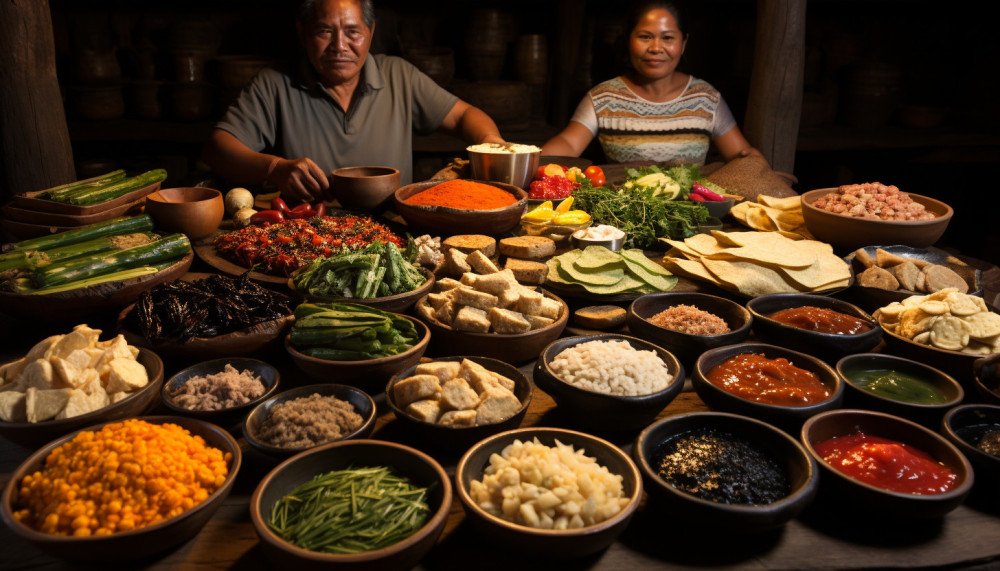Table of contents
Delve into the heart of a culinary journey set amidst the majestic backdrop of the Himalayas. Uncover age-old traditions, savor unique flavors and immerse yourself in an experience that weaves together culture, history and gastronomy in one vibrant tapestry. Within these holy mountains lie hidden culinary treasures waiting to be discovered - dishes steeped in rich tradition and crafted from locally sourced ingredients that boast unparalleled freshness. Just as each peak has its own story to tell, so does every dish that originates from this region offer a distinct narrative of its people's way of life. This exploration promises not just enticing palate adventures but also meaningful insights on sustainability and community living practiced by the dwellers of this rugged landscape.
Unearthing Traditional Recipes
In the exquisite realm of Mountain Cuisine, one finds a treasure trove of Traditional Himalayan Recipes. These culinary gems, handed down through generations, are not merely methods of food preparation, but are integral to the cultural fabric of the Himalayan communities. Indigenous cooking techniques and local ingredients combine to create dishes that are as varied and diverse as the regions themselves.
Cultural Significance plays a pivotal role in the creation of these recipes. Each dish tells a tale, narrates a history, or even symbolizes a cultural event or tradition. The food is not just nourishment, but a conduit for sharing and preserving cultural heritage.
One of the key aspects of this gastronomic journey is the use of Local Produce. The fresh, organic, and seasonal yield from the abundant Himalayan pastures and farms play a central role in these traditional recipes. From barley and buckwheat to yak cheese and wild mushrooms, the recipes bear a testament to a sustainable and self-sufficient lifestyle.
The practices of the Himalayan communities resonate with the concept of 'Gastronomy', which is the art or science of good eating. Their culinary customs, utilizing local resources and promoting Sustainable Cooking, are a testament to their understanding and respect for their environment. This, paired with their culinary skills and knowledge, leads to the creation of meals that are as delightful to the palate as they are respectful to Mother Nature.
The Art of Fermentation
Fermentation, an age-old practice widely observed in the Himalayas, plays a pivotal role in the culinary traditions of this region. It's not just about enhancing the taste of their meals, but also about reaping remarkable health benefits. Predominantly, the technique involves lacto-fermentation, a preservation method that is not only advantageous for health, it is also a vital mechanism for survival in these harsh climatic conditions.
Among the array of fermented foods popular in the Himalayas, a few stand out due to their preparation methods and remarkable nutritional value. Ghee, for example, is a distinctive form of clarified butter, fermented and used widely across the region. Another example is Kinema, a soybean-based product which is fermented, boiled, and often enjoyed as a side dish. Chhurpi, a type of hard cheese made from yak milk, is also fermented over a long period to enhance its rich, distinctive flavor.
The preparation methods of these fermented foods, while varying from household to household, usually involve natural, organic materials and traditional procedures. Ghee is typically made by fermenting butter, which is then clarified by boiling and removing the solid residues. Kinema is prepared by boiling soybeans, mashing them into a paste, and then fermenting the paste under specific conditions. Chhurpi is made by fermenting yak milk, then hardening the cheese over several weeks to achieve its unique texture and flavor.
One cannot overlook the nutritional significance of these fermented foods. They are packed with probiotics, proteins, vitamins, and essential minerals. In fact, the fermentation process enhances the bioavailability of these nutrients, making them more readily absorbed by the body. Thus, Himalayan fermentation significantly contributes to a balanced diet, offering a delectable treat to the palate while ensuring optimum health.
Exploring Tea Cultures
Immersing oneself in the diverse 'Tea Culture' of the Himalayas is a fascinating journey. One of the most interesting aspects of this journey is the discovery of 'Butter Tea', a staple beverage in the region. Originating from the 'Camellia Sinensis', this intriguing concoction is a blend of tea leaves, yak butter, and salt. Unlike traditional tea preparations, 'Butter Tea' is a savory drink revered for its ability to provide sustenance in the harsh, cold climate of the Himalayas.
The 'Rituals Associated' with tea preparation and consumption in the Himalayas are unique and indicate the 'Historical Context' and 'Geographical Influence' of the region. For instance, in Tibet, the process of making 'Butter Tea' involves a special tea churn and several rounds of churning and reheating to ensure the right consistency and flavor. This ritualistic preparation is not just about making a beverage, but also about honoring their cultural heritage and the harsh geographical conditions they thrive in.
Across the Himalayas, from Bhutan to Nepal, the tea culture varies, reflecting regional influences, and historical contexts. Whether it's the strong, milky tea favored in Nepal or the salted butter tea of Bhutan, each brew tells a unique story of the people and their unwavering spirit. It is these variances that create the rich tapestry of Himalayan tea culture, steeped in a multitude of flavors and traditions, each as captivating as the last.
Hospitality And Food Sharing Customs
The profound traditions of hospitality and culinary customs within the tribes of the Himalayas offer a fascinating insight into a unique culture centered on unity and community spirit. The rituals surrounding food sharing amongst these tribes are a testament to their societal values, shaping the remarkably diverse regional cuisine. This is particularly evident in practices characterized by 'commensality', a technical term denoting communal dining, that forms and strengthens community bonds.
The 'Hospitality Traditions' of these tribes are deeply ingrained in their culture, and guests are always treated with utmost respect and warmth. Food sharing is not just about physical nourishment, but also an act of unity, a concept that is central to these communities. The 'Food Sharing Practices' are considered sacred and a reflection of their 'Community Spirit' and 'Tribal Unity'. The bonds formed over shared meals strengthen the societal fabric, emphasizing the significance of 'Societal Values' in these communities.
The exploration of these customs underlines the necessity of preserving these traditions and their influence on regional cuisines. They tell captivating stories about the lifestyle, values, and practices of the tribes living in the harsh terrains of the Himalayas, adding a new dimension to our understanding of their extraordinary culture.
Similar














